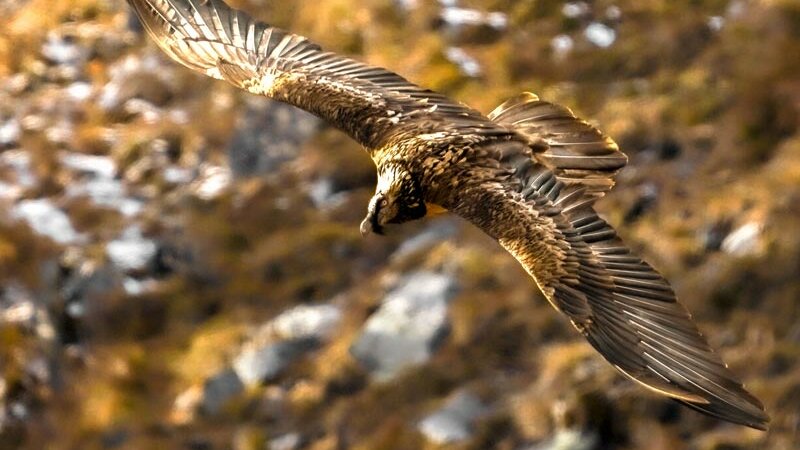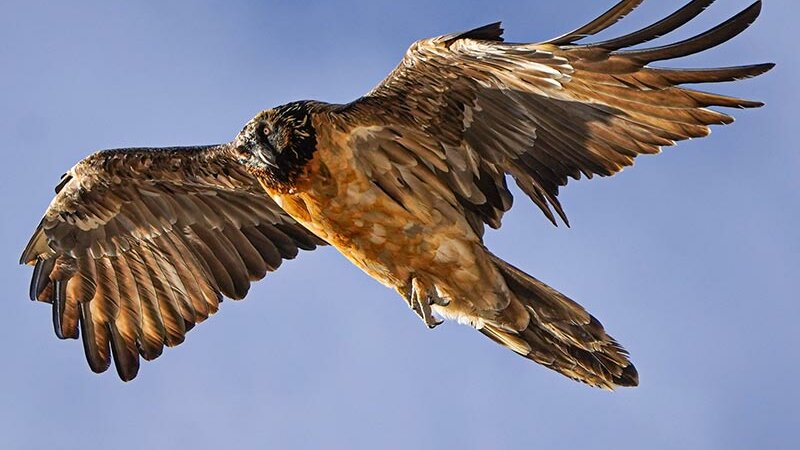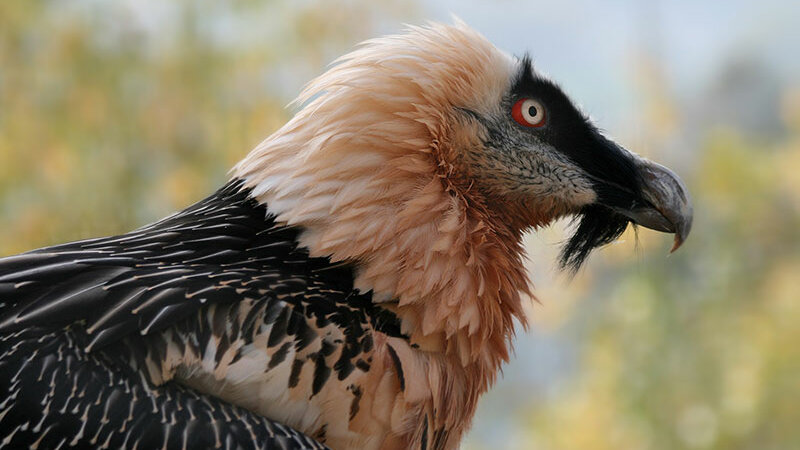For a long time, the Bearded Vulture was mistaken for a dangerous predator and was extensively hunted and persecuted in the early 19th century. Contrary to the belief that it posed a threat to livestock and even humans, the Bearded Vulture has a specialized diet that primarily consists of bones from dead animals.
The use of poisoned bait to control foxes and wolves, together with a decline in the ungulate population, eventually led to the bird's complete disappearance from the Alpine region. The last documented shooting of a bearded vulture took place in the Aosta Valley in Italy in 1913.
The first reintroduction attempts were made in the French Alps in the early 1970s, but failed. In 1986, the first successful reintroduction took place in the Hohe Tauern National Park in Austria. In 1997, almost 80 years after the disappearance of the bearded vulture from the Alps, a wild chick was first observed in Haute Savoie (FRA). Since then, the species has slowly re-established itself in the mountains of Austria, Italy, France and Switzerland.

Bearded Vulture Management
Disappearance and reintroduction
![[Translate to en:] Bartgeier ©Elisabeth Weninger [Translate to en:] Bartgeier ©Elisabeth Weninger](https://www.naturpark-oetztal.at/fileadmin/userdaten/Bilder/galerie_800x600px/tiere/Voegel/bartgeier/bartgeier_c_elisabeth_weninger.jpg)
![[Translate to en:] Bartgeier ©Stefan Plangger [Translate to en:] Bartgeier ©Stefan Plangger](https://www.naturpark-oetztal.at/fileadmin/userdaten/Bilder/galerie_800x600px/tiere/Voegel/bartgeier/bartgeier5_c_stefan_plangger.jpg)
Bearded Vulture Management in North Tyrol
In order to support the reintroduction of this strictly protected and rare bird species in Tyrol, a Bearded Vulture Management Project has been launched for North Tyrol.
The project builds on the results of a two-year preliminary project "Establishment of a cross-border Bearded Vulture Monitoring and Network Bavaria-Tyrol 2021-2022" (Evs52 within the INTERREG V-A Programme Austria - Bavaria 2014-2020).
The five Tyrolean Nature Parks and the Department of Environmental Protection of the Tyrolean Provincial Government form the central network node of the project. They work together with a wide network of partners and observers. Targeted bearded vulture management measures aim to preserve and secure existing breeding sites. In addition, visitor management measures will be implemented to avoid external disturbance, especially during the sensitive breeding season. Comprehensive public outreach activities will raise awareness and fascination for this unique bird species.












